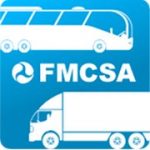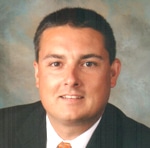
FRA considers Fitbits and similar devices to be “personal electronic devices” that are subject to the restrictions in part 220. Per the definition of an “electronic device” at 49 CFR 220.5, they are an electronic device that performs functions not necessary for the health or safety of that person and entail the risk of distracting employees from safety-related tasks.
FRA understands some Fitbit devices are rather limited in their functionality. However, a number of different fitness tracking devices are available. The Fitbit Blaze, for example, has functions that include mobile playlists, call alerts, text alerts and fitness tracking. These functions are the same type of distracting functions that have caused railroad accidents and were the impetus for the restrictions contained in part 220.
The regulation text of part 220 does not distinguish between Fitbits that have limited functionality, and those that are more akin to smartphones or smartwatches. Unless a waiver granting an exemption for certain fitness tracking devices with limited functionality were issued by FRA in the future, the agency considers all such devices to be “personal electronic devices” that are subject to the restrictions in part 220. However, railroad operating employees are allowed the use of digital clocks or wristwatches whose primary function is to tell time.
Timepieces are commonly used in the railroad industry to verify the accuracy of a locomotive’s speed indicator. This function is safety-related in that it accurately allows a train crew to comply with relevant track speed limits during the course of a train’s movement. This exception is limited to those wristwatches that do not have functions which violate the requirements set forth under 220 subpart C. The Primary function of fitness tracking devices is not to tell time.
As stated in Title 49 CFR 220.303, a railroad operating employee shall not use an electronic device if that use would interfere with the employee’s or another railroad operating employee’s performance of safety-related duties. No individual in the cab of a controlling locomotive shall use an electronic device if that use would interfere with a railroad operating employee’s performance of safety-related duties.
The exceptions within 220 subpart C account for varying operating situations, with particular flexibility for railroad supplied devices.
The only exceptions within 220 subpart C are specially stated in § 220.309:
§ 220.309 Permitted uses; exceptions to other restrictions.
Notwithstanding any other limitations in this subpart, a railroad operating employee may use the following, if that use does not interfere with any employee’s performance of safety-related duties—
(a) The digital storage and display function of an electronic device to refer to a railroad rule, special instruction, timetable, or other directive, if such use is authorized under a railroad operating rule or instruction.
(b) An electronic device as necessary to respond to an emergency situation involving the operation of the railroad or encountered while performing a duty for the railroad.
(c) An electronic device to take a photograph of a safety hazard or a violation of a rail safety law, regulation, order, or standard, provided that—
- A camera that is part of a cell phone or other similar multi-functional electronic device is not included in this exception unless it is a railroad supplied device and is used for an authorized business purpose;
- The camera, unless otherwise permitted, is turned off immediately after the documentation has been made; and
- If the camera is used in the cab of a moving train, the use is only by a crewmember other than the locomotive engineer.
(d) A stand-alone calculator if used for an authorized business purpose.
(e) A medical device that is consistent with the railroad’s standards for medical fitness for duty.
(f) A wireless communication device to conduct train or switching operations if the railroad operating employee is part of a crew assigned to a train that is exempt under § 220.9(b) from the requirement of a working radio when the employing railroad has fewer than 400,000 annual employee work hours.
Additionally, railroads may impose more stringent requirements that are subject to change at the railroad’s discretion, without notice to FRA, and can vary from railroad to railroad.

 The National Transportation Safety Board (NTSB) held a board meeting (
The National Transportation Safety Board (NTSB) held a board meeting (

 the Federal Railroad Administration (FRA) will host three public listening sessions to solicit information on the prevalence of moderate-to-severe obstructive sleep apnea (OSA) among individuals occupying safety sensitive positions in highway and rail transportation, its potential consequences for the safety of rail and highway transportation, and the potential costs and benefits from regulatory actions that address the safety risks associated with motor carrier and rail transportation workers in safety sensitive positions who have OSA. The listening sessions are intended to provide interested parties with an opportunity to share their views on this topic with representatives of both agencies, along with any data or analysis they may have. The listening sessions will take place in:
the Federal Railroad Administration (FRA) will host three public listening sessions to solicit information on the prevalence of moderate-to-severe obstructive sleep apnea (OSA) among individuals occupying safety sensitive positions in highway and rail transportation, its potential consequences for the safety of rail and highway transportation, and the potential costs and benefits from regulatory actions that address the safety risks associated with motor carrier and rail transportation workers in safety sensitive positions who have OSA. The listening sessions are intended to provide interested parties with an opportunity to share their views on this topic with representatives of both agencies, along with any data or analysis they may have. The listening sessions will take place in:
